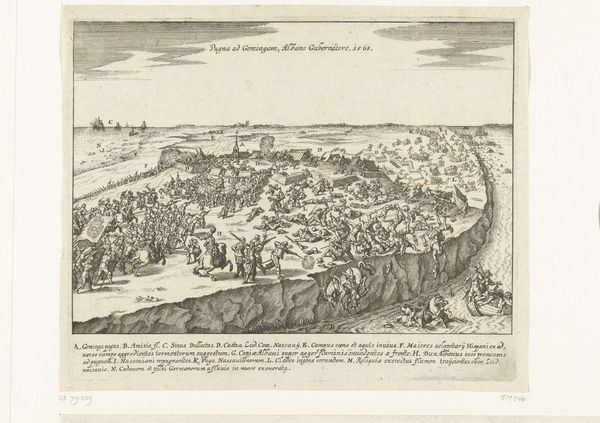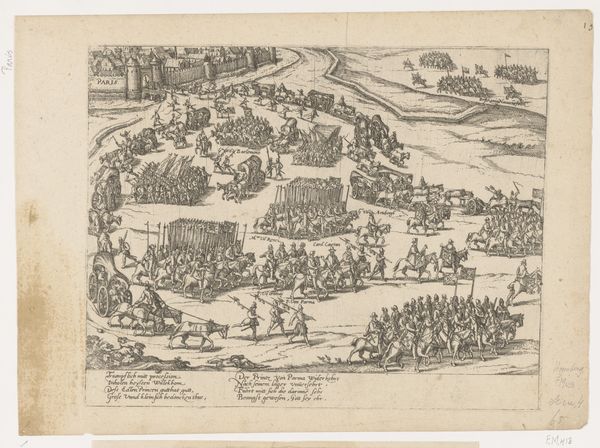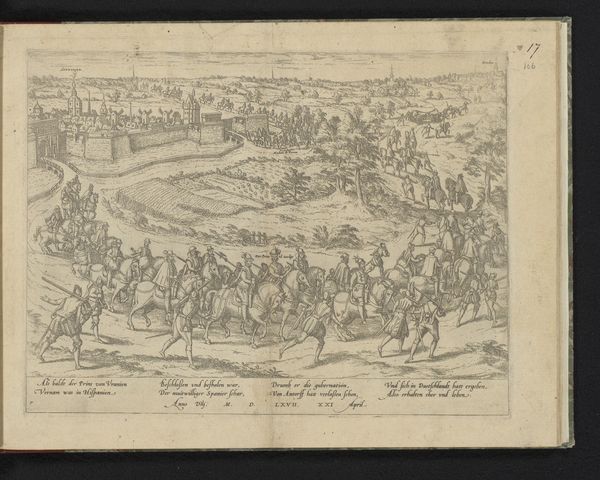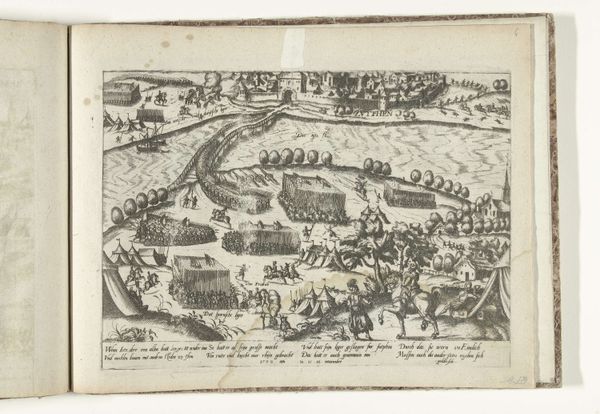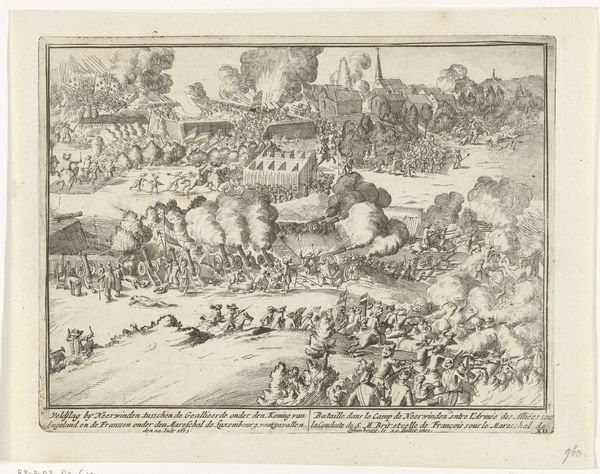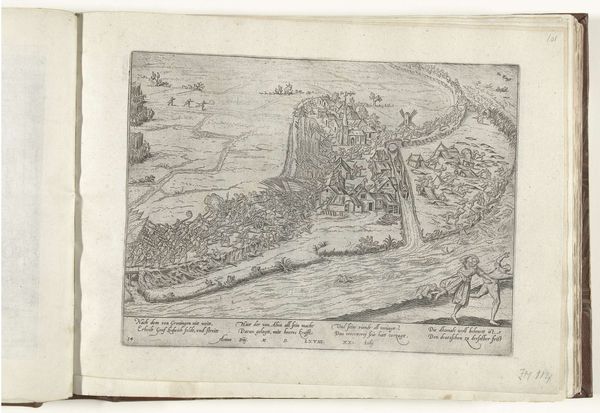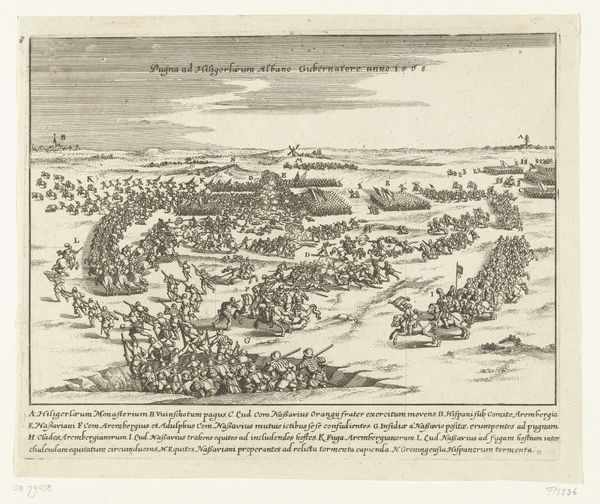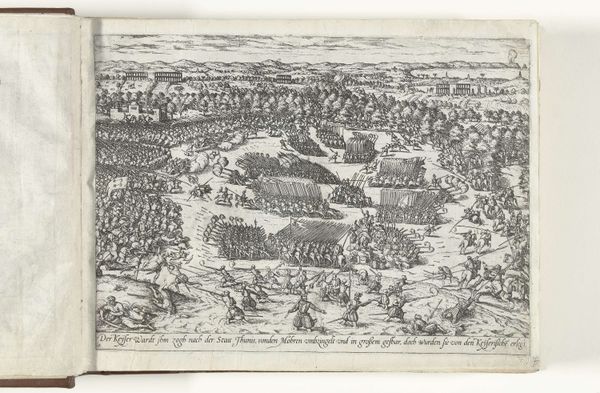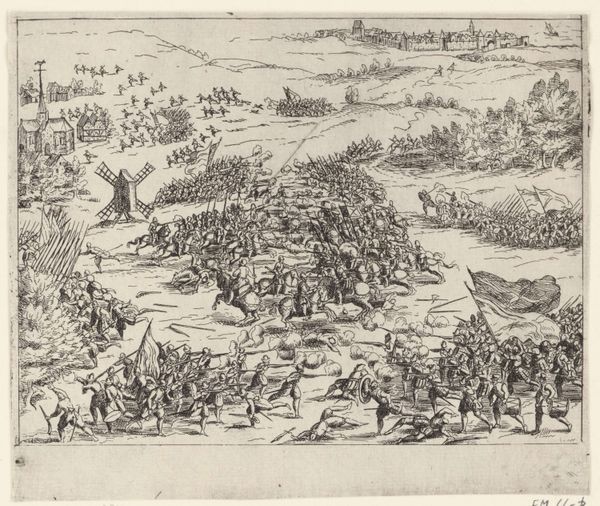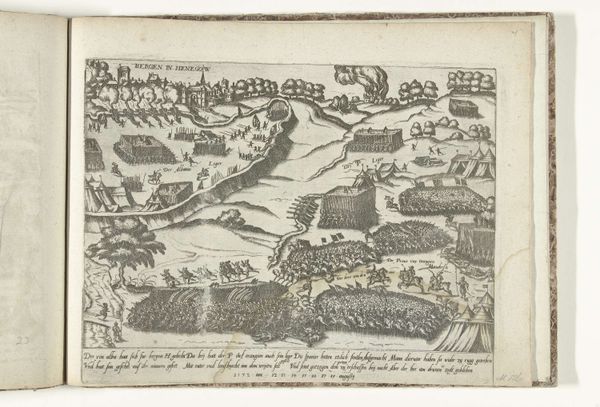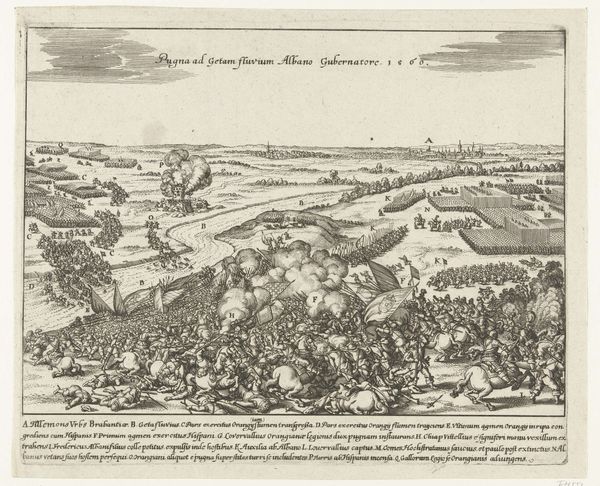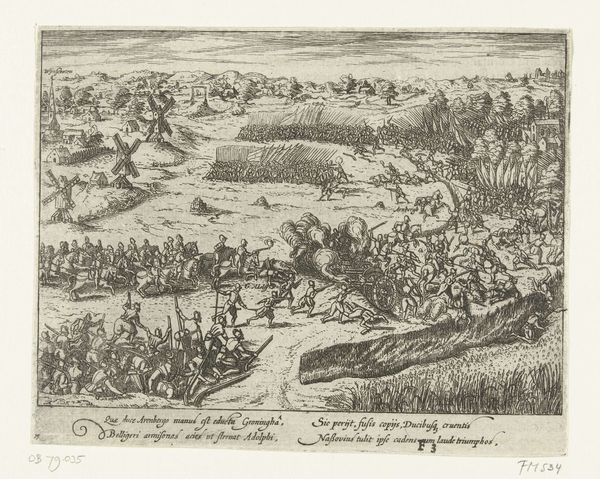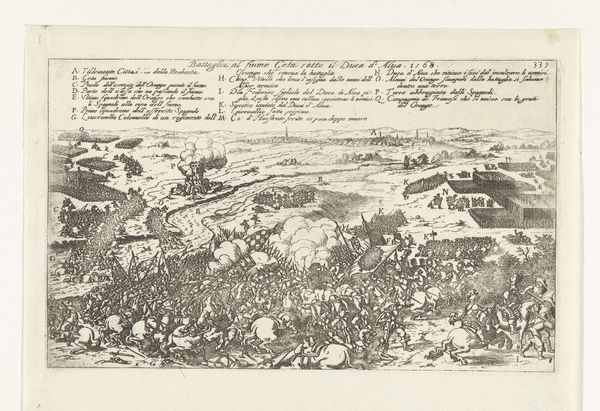
print, etching, engraving
#
medieval
# print
#
etching
#
old engraving style
#
landscape
#
11_renaissance
#
history-painting
#
engraving
Dimensions: height 210 mm, width 283 mm
Copyright: Rijks Museum: Open Domain
Curator: This engraving by Frans Hogenberg, titled "Slag bij Heiligerlee, 1568," captures a pivotal battle. Dating between 1568 and 1570, it is now held at the Rijksmuseum. Editor: It is immediately striking. The sheer density of figures creates a kind of chaotic energy across the landscape. The tonal range in this etching also creates a visual pull. Curator: Precisely. Hogenberg employs meticulous detail in this print. We can analyze its composition—the arrangement of soldiers, the cannon, the landscape itself—as elements contributing to the overall narrative. Observe how he contrasts foreground action with the distant ranks. Editor: From a broader perspective, this battle, depicted with such dramatic flair, played a crucial role in the early stages of the Eighty Years' War. Hogenberg's image isn’t just a representation of conflict. It's also a political document shaping and reflecting public memory of the conflict. The use of specific symbolic forms would likely signify the importance of certain societal conditions within a very particular sociopolitical sphere. Curator: Yes, and through a formalist lens, one might consider the balance Hogenberg strikes between realism and stylized representation. The hatching technique he utilizes to generate gradients in tonality is stunning! Notice how he indicates forms not with closed outlines but instead creates volume with a myriad of minuscule dashes. Editor: To understand this artwork properly, you also can’t ignore that Hogenberg himself was producing these images in a context ripe with tensions that arose from that war and from Spanish prosecution in the Netherlands. Curator: His perspective would definitely infuse the visual encoding embedded in its construction! Editor: Absolutely, seeing these layered and intricate crosshatched, miniaturized figures within their historical context, they become not only visual spectacle but symbols of the shifting political landscape in early modern Europe. Curator: Indeed. A closer study really brings together not only his visual choices but also a reflection of how we interpret meaning from what otherwise may just be a conflict etched in metal. Editor: Agreed. The past brought to life, vividly through both the strokes of the artist and echoes of cultural turbulence.
Comments
No comments
Be the first to comment and join the conversation on the ultimate creative platform.
